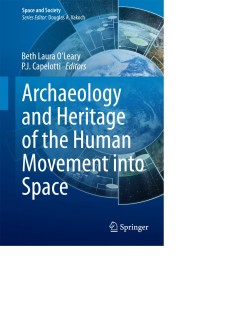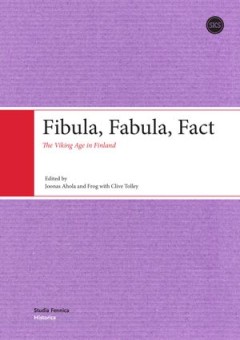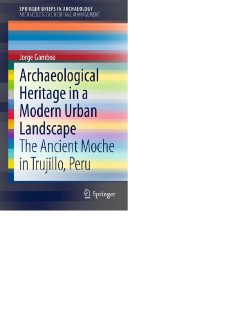Filter by

Complexity and dynamics Settlement and landscape from the Bronze Age to the …
How did people organize their settlements in later prehistoric societies? How do architecture, spatial organization, land divisions, and landscape use relate to different modes of social organization? The papers in this book contribute to a greater understanding of the complexity and dynamics of settlement and landscape organization in the Nordic countries from the Late Bronze Age to the Renais…
- Edition
- -
- ISBN/ISSN
- 9789464270440
- Collation
- -
- Series Title
- -
- Call Number
- -

Alalakh: an account of the excavations at Tell Atchana in the Hatay, 1937–1949
This monograph describes large-scale excavations undertaken by Sir Leonard Woolley from 1937 to 1939, and again from 1946 to 1949, at the site of Alalakh (modern Tell Atchana) – a late Bronze Age city in the Amuq River valley of Turkey's Hatay Province. Described is the evidence of a series of superimposed palaces and temples, town defences, private houses and graves, in 17 archaeological lev…
- Edition
- -
- ISBN/ISSN
- 9780854312177
- Collation
- -
- Series Title
- -
- Call Number
- -

Archaeology and Heritage of the Human Movement into Space
This volume addresses the creation, documentation, preservation, and study of the archaeology of lunar, planetary, and interstellar exploration. It defines the attributes of common human technological expressions within national and, increasingly, private exploration efforts, and explore the archaeology of both fixed and mobile artifacts in the solar system and the wider galaxy. This book pres…
- Edition
- 1
- ISBN/ISSN
- 978-3-319-07866-3
- Collation
- XVIII, 166
- Series Title
- Space and Society
- Call Number
- 930.1 ARC a

Archaeology of Culture Contact and Colonialism in Spanish and Portuguese America
The volume contributes to disrupt the old grand narrative of cultural contact and colonialism in Spanish and Portuguese America in a wide and complete sense. This edited volume aims at exploring contact archaeology in the modern era. Archaeology has been exploring the interaction of peoples and cultures from early times, but only in the last few decades have cultural contact and material world …
- Edition
- 1
- ISBN/ISSN
- 978-3-319-08069-7
- Collation
- XIX, 369
- Series Title
- -
- Call Number
- 930.1 ARC a

Digital methods and remote sensing in archaeology : archaeology in the age of…
This volume debuts the new scope of Remote Sensing, which was first defined as the analysis of data collected by sensors that were not in physical contact with the objects under investigation (using cameras, scanners, and radar systems operating from spaceborne or airborne platforms). A wider characterization is now possible: Remote Sensing can be any non-destructive approach to viewing the bur…
- Edition
- 1
- ISBN/ISSN
- 9783319406589
- Collation
- XIX, 496
- Series Title
- Quantitative Methods in the Humanities and Social Sciences
- Call Number
- 930.1

Fibula, Fabula, Fact
The chapters of Fibula, Fabula, Fact – The Viking Age in Finland are intended to provide essential foundations for approaching the important topic of the Viking Age in Finland. These chapters are oriented to provide introductions to the sources, methods and perspectives of diverse disciplines in a way that is accessible to specialists from other fields, specialists from outside Finland, and a…
- Edition
- Vol. 18.0
- ISBN/ISSN
- 9789522227645
- Collation
- -
- Series Title
- -
- Call Number
- 418 FIB f

Archaeology and Bioarchaeology of Population Movement among the Prehispanic Maya
Archaeological evidence - i.e. presence of exogenous, foreign material objects (pottery, obsidian and so on) - is used to make inferences on ancient trade, while population movement can only be assessed when the biological component of an ancient community is analyzed (i.e. the human skeletal remains). But the exchange of goods or the presence of foreign architectural patterns does not necessar…
- Edition
- Ed. 1
- ISBN/ISSN
- 978-3-319-10858-2
- Collation
- XIII, 159
- Series Title
- SpringerBriefs in Archaeology
- Call Number
- 712.5 ARC a

Archaeological Heritage in a Modern Urban Landscape: The Ancient Moche in Tru…
Archaeological Heritage in a Modern Urban Landscape evaluates issues about the preservation, social role and management of archaeological sites in the Trujillo area, north coast of Peru, specifically those of the Moche culture (100-800 AD). Moche was one of the great civilizations of ancient Peru, with spectacular ceremonial adobe architecture and settlements distributed across a landscape form…
- Edition
- Ed. 1
- ISBN/ISSN
- 978-3-319-15470-1
- Collation
- XI, 96
- Series Title
- SpringerBriefs in Archaeology
- Call Number
- 712.5 GAM a

A Guide to Taxila
Sir John Marshall (1876–1958) was a British archaeologist who was the Director-General of the Archaeological Survey of India from 1902 to 1928. First published in 1960, as the fourth edition of a 1918 original, this book was written to provide a concise guide to the ruins of Taxila, excavation of which was led by Marshall. The introductory chapters give the topographical and historical backgr…
- Edition
- -
- ISBN/ISSN
- 9781316529904
- Collation
- -
- Series Title
- -
- Call Number
- -

Tripolye Typo-chronology. Mega and Smaller Sites in the Sinyukha River Basin
The Tripolye phenomenon, which displays a specific artefact complex and an extraordinary settlement layout, is also known for its so-called ‘mega sites’. Five of the largest ‘mega’ or giant settlements measure between 150-320 ha in size. These, and other big settlements, are concentrated in the Sinyukha River Basin, which is a central part of modern Ukraine. In this region, more than 10…
- Edition
- -
- ISBN/ISSN
- 9789088909511
- Collation
- -
- Series Title
- -
- Call Number
- -
 Computer Science, Information & General Works
Computer Science, Information & General Works  Philosophy & Psychology
Philosophy & Psychology  Religion
Religion  Social Sciences
Social Sciences  Language
Language  Pure Science
Pure Science  Applied Sciences
Applied Sciences  Art & Recreation
Art & Recreation  Literature
Literature  History & Geography
History & Geography